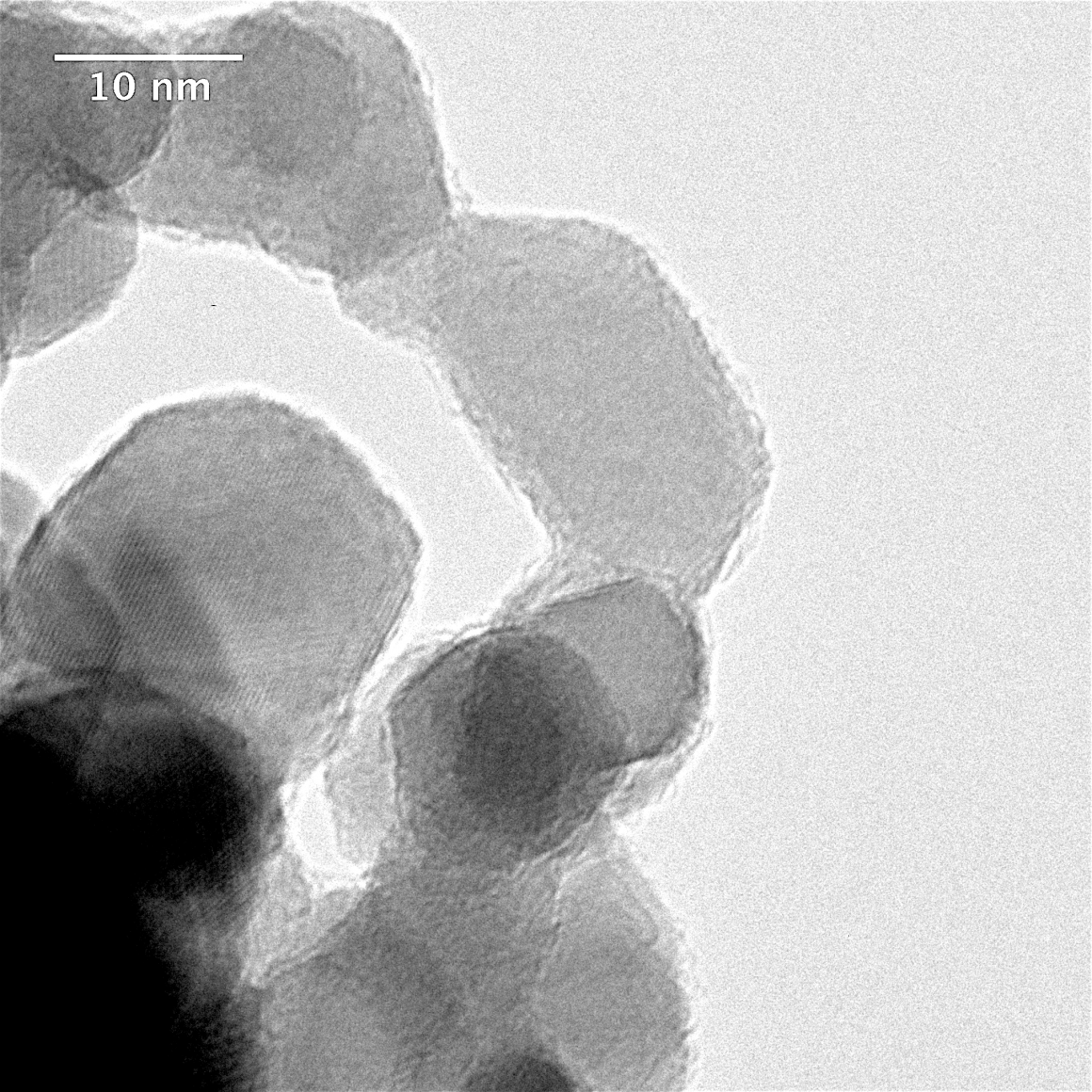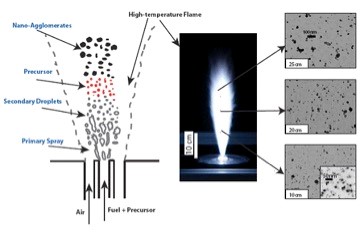UCR: Lorenzo Mangolini (lead) with Javier Garay — Thrust 1
Scientific/technological challenges: The production of functional ceramics, such as the one utilized for the WttB, relies on the densification of nanopowders which must meet stringent requirements in terms of size, structure and composition. Therefore advancing the science and technology of nanoparticle synthesis is imperative for the development of ceramics with novel and improved functionalities. Scientific/technological goals: The technological goal of this thrust is development of a synthetic protocol for the scalable production of ultra-fine nanoparticles with narrow size distribution and precisely controlled stoichiometry. Approach: We aim to produce nc-YSZ nanopowder using spray-pyrolysis, a well- established technique for industrial-scale production. Spray pyrolysis provides precise control of particle stoichiometry, achieved by mixing the solution to be nebulized with the appropriate precursor concentrations. We plan to superimpose a non-thermal plasma process to the thermally induced process to prevent particle agglomeration, thereby reducing nanoparticle size and narrowing size distribution. Non-thermal plasmas are well-known to impart a unipolar charge distribution to particles and/or droplets dispersed within their volume. The resulting coulombic interaction prevents agglomeration and consequent uncontrolled size growth. Nanopowders will be extensively characterized using techniques such as transmission electron microscopy (TEM), Raman and X-ray photoelectron spectroscopy (XPS) to monitor size, crystallinity and composition.




Leave a Reply